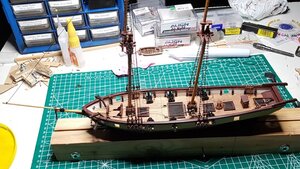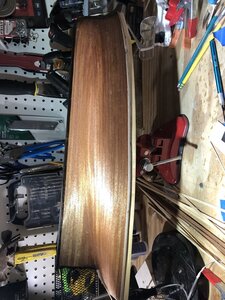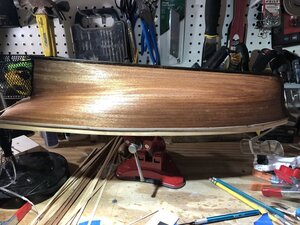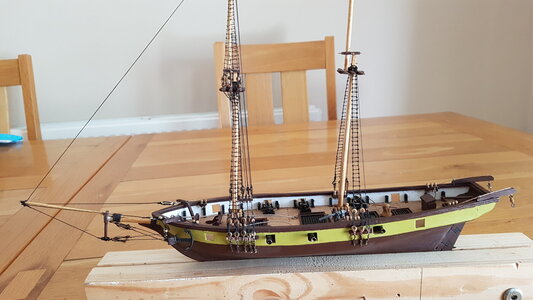This is my first experience at building wooden model ships. I am progressing slowly with my 1/100 scale Halcon 1840.
My question is, should I varnish the completed woodwork? Personally, I think her deck looks good just stained, whilst the hull and bulwarks are painted. What do you more experienced builders think?
My question is, should I varnish the completed woodwork? Personally, I think her deck looks good just stained, whilst the hull and bulwarks are painted. What do you more experienced builders think?











